TOP THINGS TO DO & PLACES TO VISIT IN BRUGGE (BRUGES)
Walking the streets where Jaggu & Sarfaraz romanced in the
Bollywood movie PK
FIRST TRIP FOR BABY ATYUDARINI
Brugge / Bruges would have an eternal special place in my heart forever
and ever! This was the first trip outside of Brussels and the first
overnight stay at a place other than home Atyudarini. I was extremely flustered about all things that could possibly go
wrong, but it was relatively OK. Unlike my earlier trips where my
itinerary would be jam-packed, this time it was slow-paced and included
getting back to the room for at least an hour during noon for Atyu to
sleep!
SHOOTING SPOT OF THE BOLLYWOOD MOVIE PK
If you're an Indian, you'll recognize Brugge, thanks to the 2014
Bollywood movie PK. The first 30 minutes of the movie were almost
entirely shot in Brugge where Jaggu (played by Anushka Sharma) and
Sarfaraz (played by the late. Sushant Singh Rajput) were students
at the local university, who met and fell in love. After the
initial 30 minutes the movie shifts to New Delhi. If you're in
Brugge, it is of course possible to walk in the same streets where
Jaggu and Sarfaraz romanced!
Self-guided Bollywood walking tour of Brugge:
Walking Map of Brugge with PK Movie
via VisitBrugge (opens/downloads as PDF)
IS IT BRUGES OR BRUGGE?
The local language here is Flemish which is a dialect of Dutch. The
spelling of the city's name in Flemish is Brugge. It is pronounced
more like 'Bruhhe'! The anglicized name of the city is Bruges.
UNESCO WORLD HERITAGE SITES IN BRUGGE, BELGIUM
Brugge is the home to 3 of the
UNESCO World Heritage Sites in Belgium - Historic Center of Brugge, Brugge Belfry, and Brugge
Beguinage! For practical purposes, the Belfry and the Beguinage are
within the border of the Historic Center of Brugge.
HISTORIC CENTER OF BRUGGE
The entire city of Brugge is listed under UNESCO as Historic City Centre
just like its counterparts in
Ahmedabad,
Florence,
Bath, etc. The center point is of course the Belfry and
Town Hall and the whole city is around it. It is possible to
visit the Townhall as well, however, I didn't have the time for it. Just
beside the Townhall is the
Basilica of Holy Blood (click to read the article about it). This place is
called Burg Square.
A 1 minute's walk from Burg Square leads to the Grand Place of Brugge
where the Brugge Belfry and Provincial Court (Provinciaal Hof)
are located. In the movie PK, it was at this square where Jaggu &
Sarfaraz meet for the first time (where the Bachchan recites Bachchan
event is taking place). Just beside the Belfry is the Salvador Dali expo which I sadly
missed though Dali is one of my fav artists.
Where is the Brugge Town Hall (on Google Maps)? Stadhuis Brugge
How to reach Brugge Town Hall: 1.4km (18 mins walk)
from Brugge Railway Station. There are many DeLijn buses that connect the 2.
Brugge Town Hall tickets: €7.00 (included in the Musea Brugge card & Museumpassmusees)
Brugge Town Hall timings: Everyday 09:30AM to 05:00PM
Where is Bruges Burg Square (on Google Maps)? De Burg
Where is Bruges Grand Place (on Google Maps)? Grote Markt Brugge
Grand Place & Burg Square Tickets & Timings: Free & 24x7
Where is the Salvador Dali expo (on Google Maps)? Salvador Dali Expo
Salvador Dali expo tickets: €10.00
Salvador Dali expo timings: Everyday 10:00AM to 06:00PM
BRUGES BELFRY - BRUGGE BELFORT
The first ever Belfry that I saw was of Tournai, followed by Ghent. These 3 along with 53 other belfries in Belgium & France were
brought under the wings of UNESCO in 1999 & 2000 CE. To begin with,
this is perhaps the narrowest spiral staircase that I've ever climbed on,
take that from someone who has climbed quite a few church towers! That
too, wearing our little Atyudarini... That was one feat,
achieved!
Brugge Belfry history: Brugge Belfry is 83m tall and was built in
2 phases. It has 3 sections (lower 2 squares built in 13th C using bricks
and 1 octagonal atop those built in the 15th C with Brabant Limestone).
The entry is on the 1st floor which is the same floor as the treasury. The
double heavy-iron doors definitely reminded me of the safes in the banks
back home! These were made in 1290 CE and had 10 locks on them when they
were functional. The keys were with 10 different guild heads &
mayor.
The Belfry has had 10 different Great Bells so far from 1280 to 1745. The
last one cracked in 1745 and it was replaced by the existing bell of the
Church of Our Lady, which was cast by Melchior de Haze in 1680. In 1809 it
had a new bell frame, thanks to the then mayor, and it's also been
engraved on it.
Climbing the Brugge Belfry: There are a couple of stops available
in between where various bells are kept on display. After quite a bit of
walking (there are stickers once in a while that mention the number of
stairs crossed and the number remaining!), we reached the drums room where
the Great Bell is present. Another climb after this is where the carillon
is and a very short stretch after this is where I got to see the
spectacular panoramic view after scaling 366 steps.
Brugge Belfry Carillon: The Carillon has 47 bells today of which
26 were made in 1742-46 and the rest in 2010. The very last part of the climb, especially from the carillon to the
top is very very narrow that was voluptuous person may not even be able
to scale it!
Panoramic view from Brugge Belfry: However, the view from atop is
totally worth the looooooong climb! The major church towers are beautiful
in the cityscape. What's unusual in this particular Brugge cityscape are
their windmills. It is not often that you get to see several windmills,
both modern and old ones, in the same frame. It has quite a bit to say
about the city's commitment to renewable energy and eco-friendliness and
more!!! It is a wee bit difficult to spot the manual windmills, but once
you spot one, you can spot the rest easily too!
The Leaning Tower of Pisa Brugge: Btw, it is said
that this Belfry would be soon like the Pisa Tower - leaning! It is said that it is leaning about a meter to the west.
Check out the very funny video by Visit Bruges about the Leaning Tower of Bruges!
Where is Brugge (Bruges) Belfry (on Google Maps)? Brugge Belfort
How to reach Brugge (Bruges) Belfry? It is at the Grand Place mentioned
above
Brugge (Bruges) Belfry tickets: €7.00 (included in the Musea Brugge card & Museumpassmusees)
Brugge (Bruges) Belfry timings: Weekdays
10:00AM to 6:00PM; Sat 09:00AM to 08:00PM; Sun 10:00AM to 06:00PM
ROZENHOEDKAAI & KON ASTRID PARK
From the Brugge Belfry, a short walk took me to Rozenhoedkaai which immediately reminded me of
Graslei & Korenlei of Ghent. It is just so picturesque and probably because we were there on a
weekday in winter, it hardly had any of the tourist crowd! It is a
charming cobblestone street on the banks of the canal.
In the movie PK, it was on these streets along the canals
including Rozenhoedkaai, Groenrei, Gouden Handrei, Spielgelrei, Sint Annarei, etc.,
where the lead couple Jaggu (Anushka Sharma) and Sarfaraz (Sushant Singh
Rajput), walk, bike, go on a boat, etc.
From Rozenhoedkaai as I was told "Lose the map and explore Bruges", I
gave up on the map and started to walk where my legs took me and ended up
in Koningin Astrid (Queen Astrid) Park. It was sunny and Atyudarini
got to see ducks for the first time and took a sun bath as well! In this
garden is also a Church of Mary Magdelene and Saint Catherine.
Where is Rozenhoedkaai (on Google Maps)? Rozenhoedkaai
Where is Groenrei (on Google Maps)? Groenrei
Where is Gouden Handrei (on Google Maps)? Gouden Handrei
Where is Koningin Astrid Park (on Google Maps)? Koningin Astridpark
SAINT ANNE's DISTRICT & WINDMILLS OF BRUGGE
By afternoon we headed
to Sint-Annakerk & Jeruzalemkerk. This
locality is called Saint Anne's District. The street that leads to Sint
Annakerk is called the Sint-AnnaKerkStraat (Saint Anne's Church Street)
and a portion of it is a bridge that crosses the canal. Of course, that's
where Jaggu (Anushka Sharma) looks down to the canal where Sarfaraz
(Sushant Singh Rajput) is going on a boat.
By sunset, we were at Kruisvest where 4 traditional
windmills are located along the canal. Somehow I missed seeing a
traditional windmill both in London & Amsterdam and I was pretty much bummed about it and here I was in front of one with
my Atyu! The first in the line is Bonne Chieremolen which
can only be seen from outside, followed
by Sint-Janshuismolen (St.John's House Mill). This has
been converted into a museum. But sadly this was closed for renovation
when I went. But still, I got to see traditional windmills!!!
It is till this point, bordering these mills, the UNESCO Heritage City's
boundary lies. Following these 2 are 2 more mills, but by this time, it
started getting colder and Atyudarini began to cry so we skipped the 2.
Pretty close to the 4th mill is the OLV-ter Potterie Church.
This houses some statues or paintings of the 13th & 14th C CE which,
unfortunately, I never got to see!
All about Sint-Annakerk, Jeruzalemkerk: Read my article on
the
Churches of Brugge
Where is Bonne Chieremolen (on Google Maps)? Bonne Chieremolen
Where is Sint-Janshuismolen (on Google Maps)? Janhuismolen
Sint-Janshuismolen tickets: €5.00 (included in the Musea Brugge card & Museumpassmusees)
Sint-Janshuismolen timings: Tue to Sun 09:30AM to 12:30PM & 01:30PM to 05:00PM
BONIFACIOUS BRIDGE
In the opposite direction, very close to the city center
are Groeninge Museum, Arenthuis & Arent's
Courtyard. The connection between Groeninge Museum and OLV Church
(OLV-ter potterie is a different church!), is a gorgeous little bridge
that is actually one of the most romantic places in Brugge! This is
called the Bonifacious Bridge built only in 1910 CE.
The best part - it has a built-in seat inside it making it a perfect
place to sit & watch the stream. But behold, get there as early as
possible to get your solo pic or just to sit peacefully and enjoy. The
place does get very very crowded throughout the day. On the other side of the bridge are the OLV Church, Archaeological
Museum, and Sint Janshospitaal back to back.
Where is Bonifacious Bridge (on Google Maps)? Bonifacious Bridge
Bonifacious Bridge tickets & timings: 24 x 7 & Free
FLEMISH PRIMITIVES IN BRUGGE
On day 2 at Bruges, I took off from Hotel Prinsenhof at 9:15AM to reach
the OLV Church at its opening time, and from there I headed to Groeninge
Museum. When I visited, there weren't any temporary exhibitions on. The
permanent collection, when compared to the various fine arts Museums I've
been to, is relatively small.
What does Flemish Primitives mean? When I first came across the
term 'Flemish Primitives' I did not understand a bit. Was it something to
do with archaeology? Actually nope! Not, thaaat primitive. They're just
talking about 15-16th C CE. Well, the terminology was assigned in 1902 as
the name of an exhibition of about 400 such paintings that were held in
Bruges. Primitive is more associated with the style of the paintings which
was more soft, fluid Christian in feel.
Early Renaissance Art Period: The realism in these paintings was
mind-blowing, esp., in their depiction of fabrics, fur, metals &
precious stones. The timeline is the same time as Gothic architecture.
This was also called the Early or Northern Renaissance and was prevalent
all over Belgium, esp Flanders. The main artist of the era is Jan Van Eyck
who is one of my favorite artists during my art history days at Uni. Today
gorgeous pieces of art are scattered all across Bruges - Groeninge Museum,
St.John's Hospital, Church of our Lady, St.Savior's Cathedral, and
more.
Groeninge Museum: Self-guided tour at Groeninge Museum begins
with - no prizes for guessing - obviously, Jan Van Eyck!
Here's Virgin and Child with Canon van der Paele from 1434-36 CE.
Another major artist, his contemporary, was Hans Memling. So the first
room with filled with both their artworks. Further ahead in the other
rooms were the paintings of the Flemish artists of the later era till 19th
C CE. Though there were quite a few works of Hans Memling, Gerard David,
etc were on display, there was only one Jan Van Eyck's work! That
was definitely a bit surprising...
St.John's Hospital (Sint Janshospitaal): From there
I headed to St.John's Hospital. No, it is not a functional hospital now,
though it was once! It is currently a fine arts museum/gallery. A
temporary exhibition called Smoke, Ashes, Fable by William Kentridge was
on, including tapestry, animation, and more. The permanent collection
majorly features Hans Memling. The most important being the altarpiece of
John the Evangelist and John the Baptist. It reminded me of the Adoration of Mystic Lamb at Ghent. This altarpiece was commissioned for this chapel in
St.John's hospital.
Where is Groeninge Museum (on Google Maps)? Groeninge Museum
How to reach Groeninge Museum? 1.2km
(15 mins walk) from Brugge railway station. DeLijn Trams Route no:
1,6,11,14,16 take you from the railway station to OLV Kerk. 500m (6 mins
walk) from Bruges Grand Place
Groeninge Museum Tickets: €14.00 (included in the Musea Brugge card & Museumpassmusees)
Groeninge Museum Timings: Tue to Sun 09:30AM to 05:00PM
Where is Sint-Janshospitaal (Saint John's Hospital) (on Google Maps)? Sint-Janshospitaal
How to reach Sint-Janshospitaal (Saint John's Hospital)? 2 mins walk from Groeninge Museum
Sint-Janshospitaal (Saint John's Hospital) Tickets? €14.00 (included in the Musea Brugge card & Museumpassmusees)
Sint-Janshospitaal (Saint John's Hospital) Timings? Tue to Sun 09:30AM to 05:00PM
BRUGGE BEGUINAGE
Further ahead is the Begijnhof. The first ever Beguinage that I saw was of Leuven, followed by Ghent. These 3 along with 10 other Flemish Beguinages were listed as UNESCO
world heritage sites in 1998 CE. Read more about who Beguines are and what
the specialty of the Beguinages is, in my Leuven Beguinage post. The entrance is across a picturesque bridge and with swans
swimming beneath it's just spectacular (more details below in Minnewater
section).
The one in Brugge is called 'Ten Wijngaerde'. This was built in
1245 CE and is perhaps the smallest that I've seen with hardly 2 streets
and perhaps the 'strictest' as well! Mostly the Beguinages have a very
laid back, peaceful feel, mostly occupied by various students and other
general public. However here, there were several boards within that small
space requesting silence and to keep off the grass! But maybe that's
because this city is much more touristy than the other places and maybe
they had some unruly tourists in the past which prompted them to put up 10
boards in just 2 streets!!!
As with every Beguinage, this too has a church in it called
St.Elizabeth Church. There's also an in-house museum & shop as
well. Walking in these streets, I saw the window of one particular house
which has gorgeous Belgian laces hung as decor!!! Against the old, rustic
brick walls, these delicate, pristine laces were just not
missable!!!!!
Where is Bruges Beguinage (Brugge Begijnhof) (on Google Maps)? Beguinage
How to reach Bruges Beguinage (Brugge Begijnhof): 750m (10 mins walk) from Bruges Railway Station
Bruges Beguinage (Brugge Begijnhof) Tickets: Free to enter Beguinage & Church; Museum: € 2.00
Bruges Beguinage (Brugge Begijnhof) Timings: 6:30AM to 6:30PM
MINNEWATER
Minnewater is also considered one of the most romantic locations in
Bruges. There are so so so so so many swans here (yes, Atyu got to see
swans for the first time too)! The park is more of a very forest-y (read:
not manicured) park which is very nice.
In the movie PK, in the song 'Chaar Kadam', it is here in this park, as
well as in front of the beguinage (2nd pic above) that Jaggu (Anushka
Sharma) and Sarfaraz (Sushant Singh Rajput) read poetry and fall in
love!
At the end of Minnewater is the Powder Tower. The other end of
the UNESCO Heritage City boundary is till this point. The powder tower
is one of the gates of the original city wall belonging to the 11th C
CE. However this tower was built in 1401 CE and was used to store
gunpowder. Today accessing inside this is not permitted however it is a
stunning backdrop at Minnewater.
Where is Minnewater (Lake of Love Bruges) (on Google Maps)? Minnewater Brugge
How to reach Minnewater? It is just
in front of Brugge Begijnhof (Bruges Beguinage)
Where is Powder Tower (Poertoren) (on Google Maps)? Poertoren
WATCH PK MOVIE ONLINE AND THE MAKING OF PK ON YOUTUBE
This is not my video, but the official video of the movie after it was
released on YouTube. The section shot in Brugge is from 6:41 to 21:17.
Also, here are the behind-the-scenes videos from Brugge including why
Brugge was chosen by the makers of the movie.
IS MUSEA BRUGGE CARD WORTH IT?
If you're in Bruges for 1 day and if you might spend most of it walking
along the canals, you may not need the card. However, if you're here for 2
days or more, it is absolutely worth it. Like Paris, most of Brugge
attractions are also museums with the fascinating art of Flemish Masters,
as well as the UNESCO World Heritage Sites of Belfry and Beguinange. All
these are included in the Musea Brugge Card, so it is totally worth it!
What is the price of the Musea Brugge Card? €32 (€24 if you're below 25 yrs of age)
What is the validity of the Musea Brugge Card? 72 hours
Where to buy Musea Brugge Card? Buy your Musea Brugge card
via VisitBrugge website
BIKE RENTALS IN BRUGGE
If you're going to experience Brugge like Jaggu & Sarfaraz did in
the movie PK, you have to ride a bike around the town! There are many
bike rentals available all over Bruges/Brugge. If you're particularly
looking for a bike with a child seat or tandem bike or e-bike it is
advisable to prebook them.
Bruges Bike Rental -
official website of Bruges Bike Rental
BRUGGE HOTELS
Everything from luxury Bruges hotels to budget Bruges Hotels to
Bruges B&Bs is available in Brugge City Centre. Here’s my review of Hotel Prinsenhof where I stayed.
HOW TO REACH BRUGGE FROM BRUSSELS?
Brugge (Bruges) is one of the major cities in Belgium. Brugge
(Bruges) has a major railway station and is well connected by Belgian
Railways (SNCB-NMBS trains) from all the other cities in
Belgium.
LOCAL TRANSPORT IN BRUGES
Local Transport within Bruges is possible with DeLijn buses (and
horse carts!). However, most sites are walkable. The city does not
have a metro or tram.
MY COMPLETE TRAVELOGUE ON BRUGES:
BOOKMARK IT / PIN IT NOW & READ LATER

.jpg)



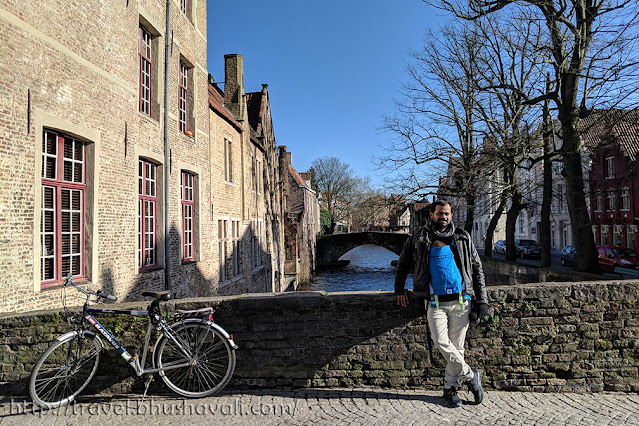


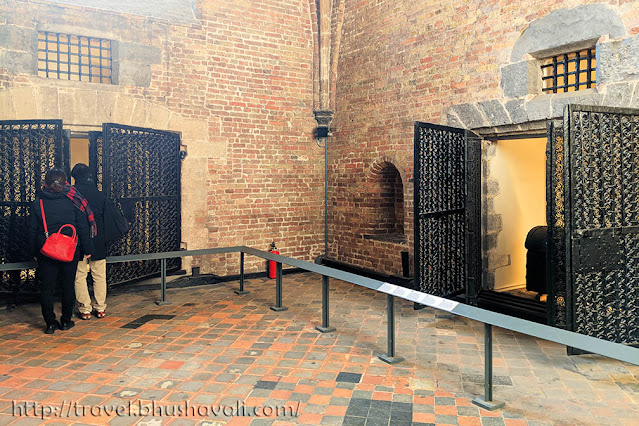

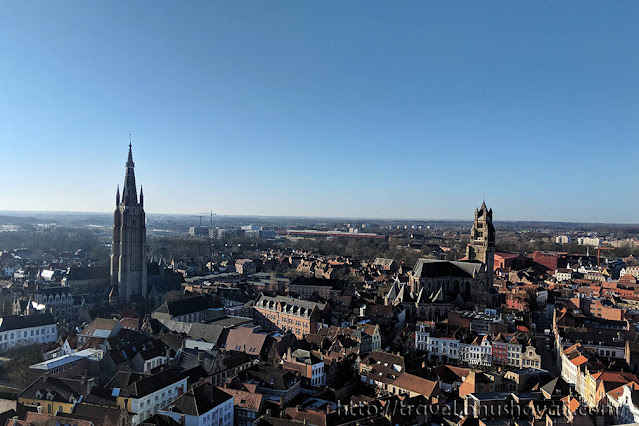

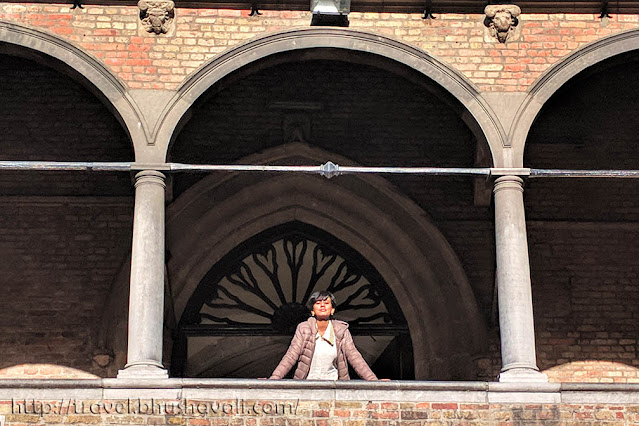
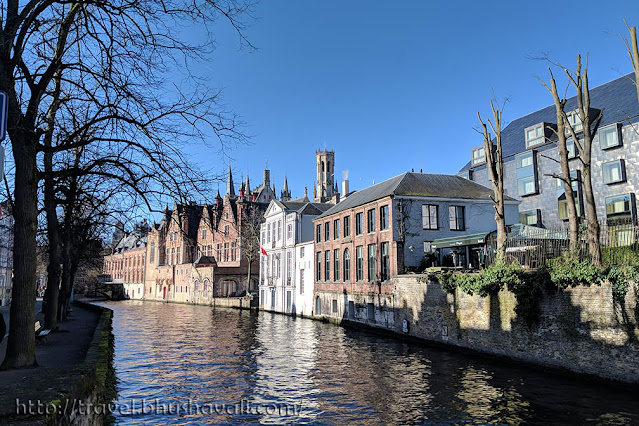
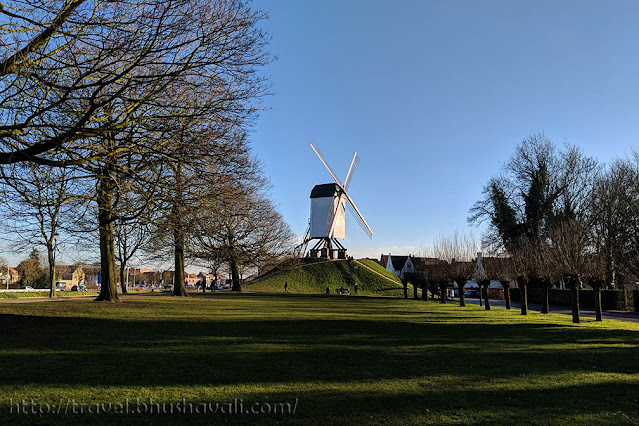
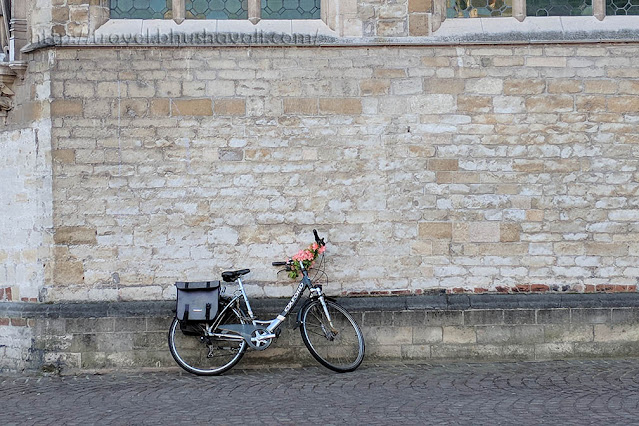
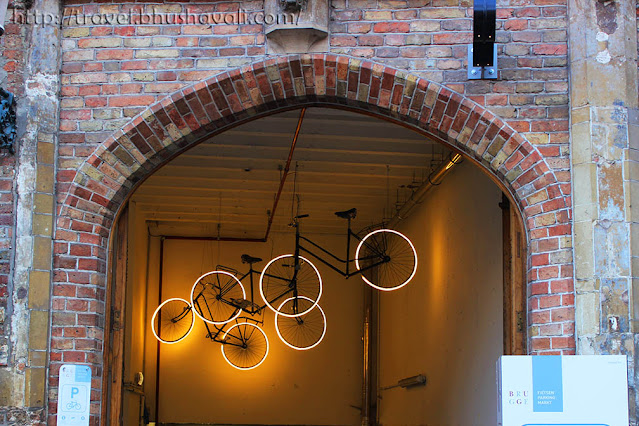


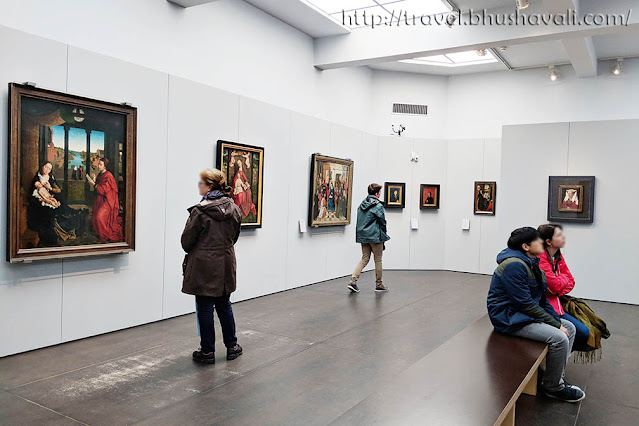




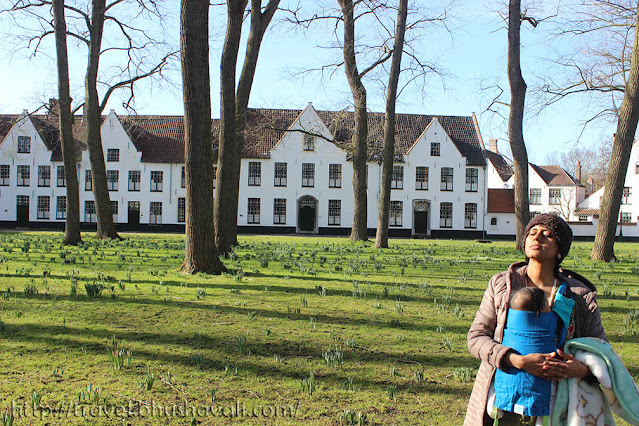


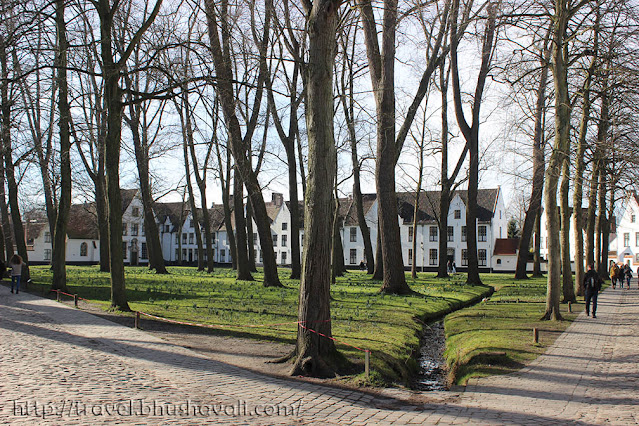

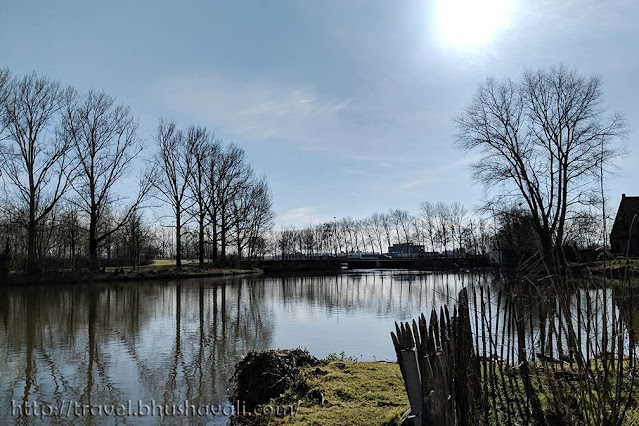

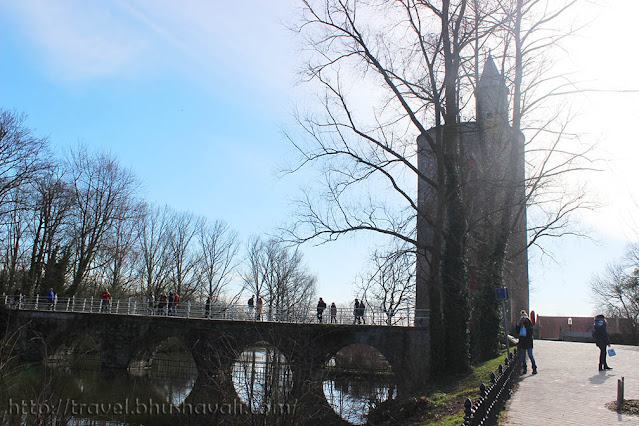


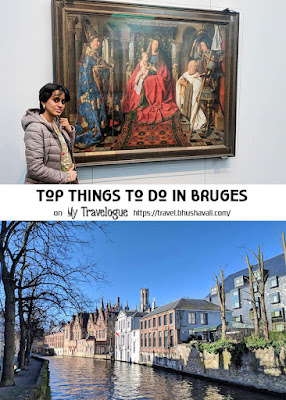





I am love with this city... the first time I saw PK, the only thing I wanted to was to go there and live that life... much love to europe
ReplyDeleteWhat a pretty town! The park with the windmills is so beautiful and that seating spot on the Bonifacious Bridge must be amazing!
ReplyDeleteYour post brought back such good memories of Brugge for me! I missed the windmills when I was there and would love to go back and see those. It's such a quaint, beautiful city.
ReplyDeleteBrugges is one of the most beautiful cities I've ever visited. I'm a bit jealous of your trip however. When I went it was packed for a festival. It looks like you had the city largely to yourself. I would love to go back someday during a less crowded time.
ReplyDeleteI visited Bruges in the winter last year and it was amazing! The little cute chocolate town with a nice river. I love wandering around and exploring this city. This is still my favorite one so far :)
ReplyDeleteThis is lovely and interesting. After all, this is not the first time I have read about Beginhof and Minnewater as one of the most romantic locations.
ReplyDeleteThus, I Will definitely include this UNESCO Heritage City on my travel bucketlist. Thank you for sharing this detailed post. I have never realized that there are a lot to see and do in Bruges aside from Beginhof.
Nice account of your visit to Bruges.
ReplyDeleteBruges is so beautiful! And tasty with those yummy waffles. It looks like you were there at the right time of year because it's so peaceful and not crowded with people. So romantic!
ReplyDeleteSuch a wonderful place to explore! Vibrant photos BTW
ReplyDeleteThe vibrant photo of Windmill and the Lake makes me want to visit Bruges. I want to try also the waffles!
Deletei haven't visited Bruges for years and I so want to go back after reading this! particularly to try those waffles that you mention!
ReplyDeleteI really loved your photos of Bruges. I agree that the waffles at Chez Albert are amazing! When I went it was Belgian National Day, so we all got Belgian flags on ours. It's very cool that you got to see a windmill, but too bad that the museum was closed.
ReplyDeleteThe first pic won my heart. A very personal touch that is missing in most of the travel blogs these days. Also the pop culture reference was so cool. I was wondering about the place where the movie was shot.
ReplyDeleteBruges looks like a great city to sort of just wande and get lost. The waffles sound quite nice. It seems like your daughter had a great time with you there.
ReplyDeleteBruges looks like a fairytale place. I remember seeing it in one of those movies - PK I think. In someways with those canals, it reminds me of Amsterdam but a quieter version of it. Hope to be able to get here sometime.
ReplyDeleteThis is such a beautiful place. As I was reading the post I was in awe of the pictures. There is something really charming about Bruges, kinda like a soothing poetry. Definitely worth a visit.
ReplyDeleteCan see why you'd hold this place dear to your heart. It's so charming and glad to hear this trip was more slow-paced so you could really experience and enjoy all these beautiful sceneries!
ReplyDeleteamazing places!
ReplyDeleteThat was a very informative post! I visited Bruges with my 3 year old son few months ago and it was freezing at that time but we enjoyed our trip. https://t.co/DfzvkHcZXc
ReplyDeleteFatima | www.blogsbyfa.com
great coverage...
ReplyDelete